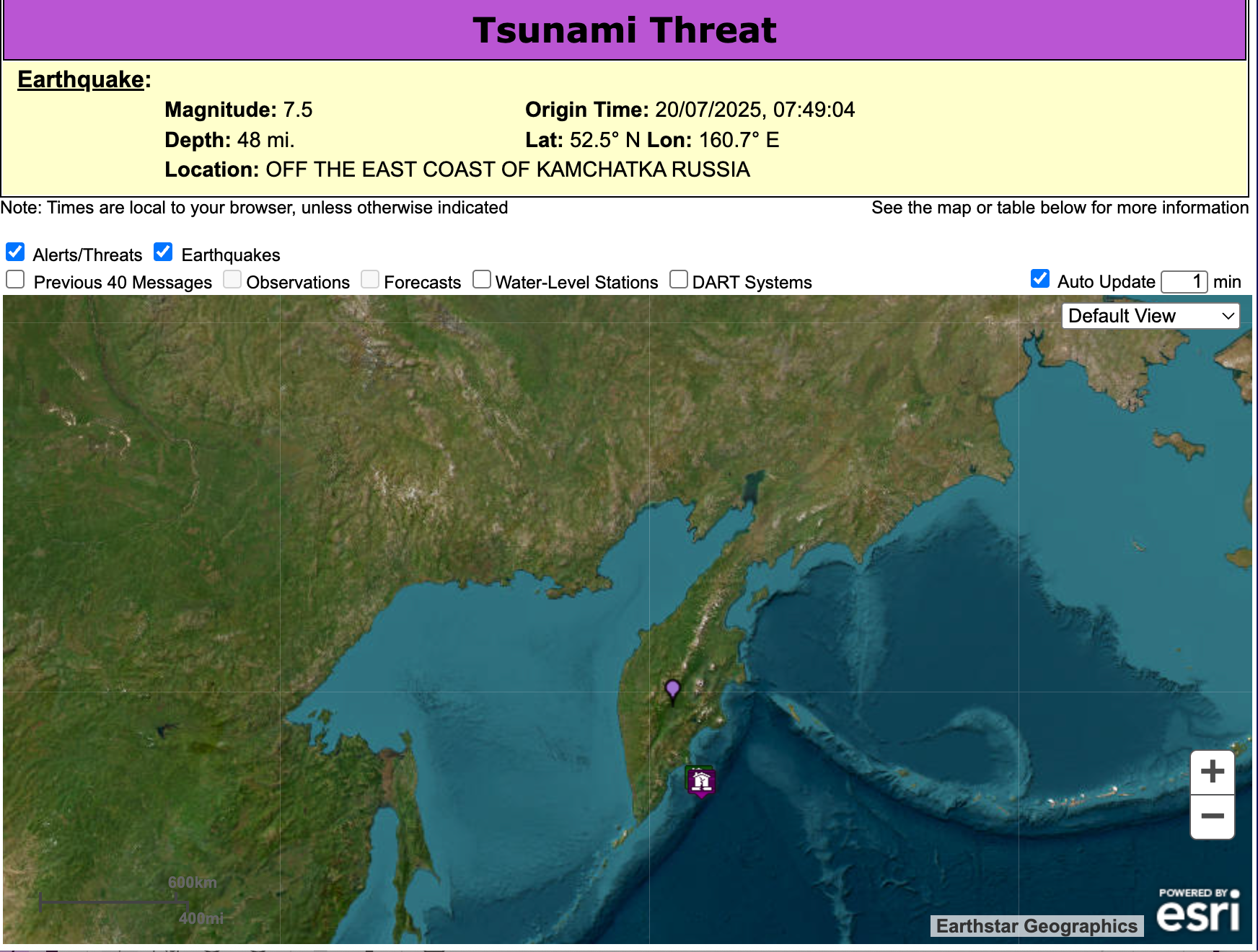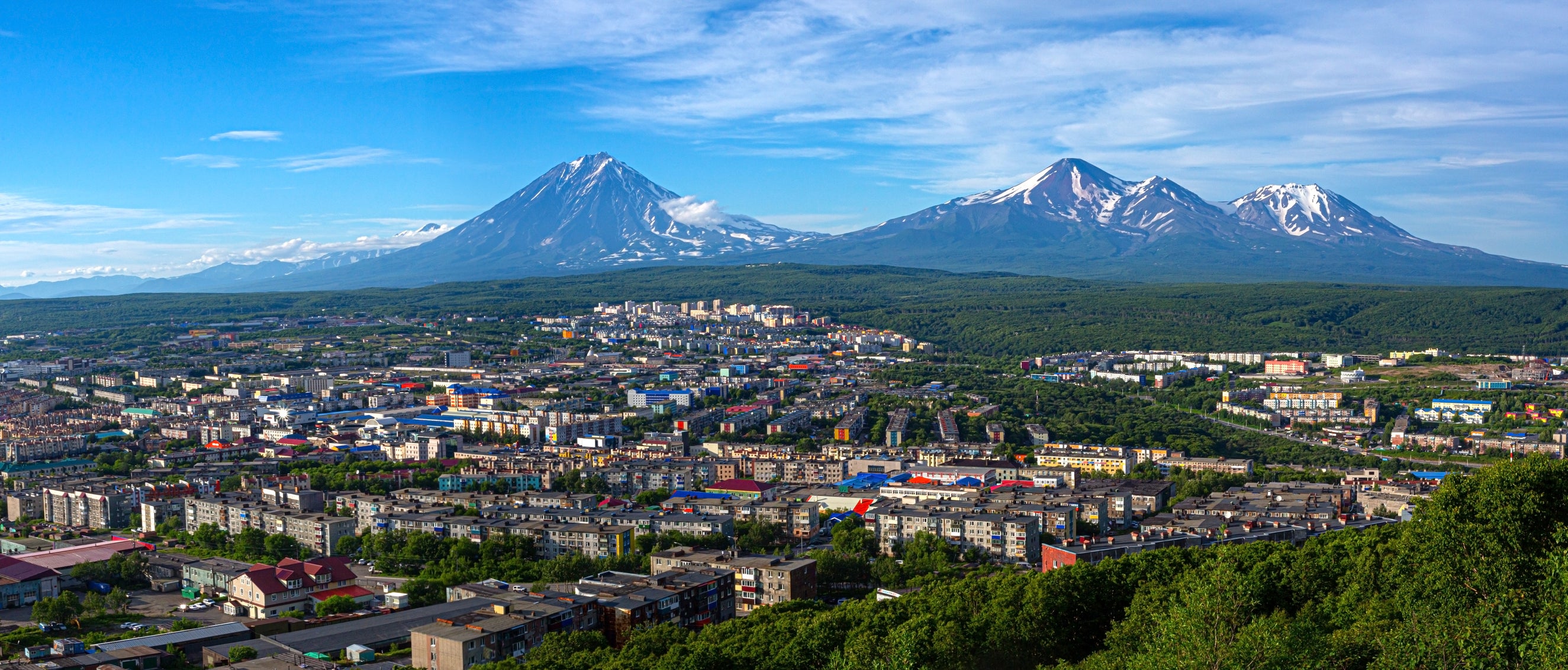The Pacific Tsunami Warning Center has retracted a tsunami warning for Russia’s Kamchatka Peninsula after two quakes struck in the sea nearby on Sunday.
The larger quake with a magnitude of 7.4 was at a depth of 12 miles and was 89 miles east of the city of Petropavlovsk-Kamchatsky, which has a population of 180,000.
A few minutes earlier, a quake with a magnitude of 6.7 was recorded nearby.

Initially the US National Weather Service also issued a warning for Hawaii, but this was later cancelled after further investigation indicated there is no longer a threat to the island.
Russia's state-run TASS news agency reported that waves of up to 60 cm could reach the sparsely populated Aleutsky District on the Commander Islands.
But the PTWC later downgraded its warning, before finally saying the danger had passed.

A message on the Pacific Tsunami Warning Center had warned that tsunami waves reaching 1 metre above tide level were possible for some Russian coasts.
It said waves were forecast to be less than 0.3 metres above tide level for the coasts of Hawaii and Japan.
Measurements of earthquakes often vary in the first hours after they occur. There were no immediate reports of casualties.
The German Research Center for Geosciences (GFZ) indicated twin earthquakes of over 6.5 magnitude struck near the coast of Kamchatka, in Russia's far east, early on Sunday.
It measured the quakes at 6.6 and 6.7 and the depth of both at six miles.
On November 4, 1952, a magnitude 9.0 quake in Kamchatka caused damage but no reported deaths despite setting off 30-foot waves in Hawaii.
The Pacific Tsunami Warning Center describes a tsunami as a series of waves, with the time between wave crests varying from five minutes to and hour. It says the hazard of a tsunami wave may persist for many hours after the initial wave.
It warned people caught in the water of a tsunami are in danger of drowning, being swept out to sea or being crushed by debris in the water.
Ukraine-Russia war latest: Zelensky offers Putin fresh peace talks
Arctic birders combat impact of climate change and avian flu on delicate ecosystem
Water tanks replace springs on a Serbian mountain as drought endangers some 1,000 cows and horses
After decades of division, can this European country finally find peace?
Ukraine war veterans to be ringside for Usyk’s heavyweight fight







